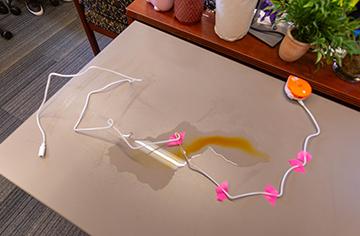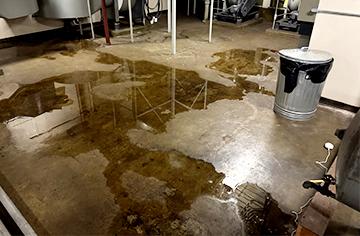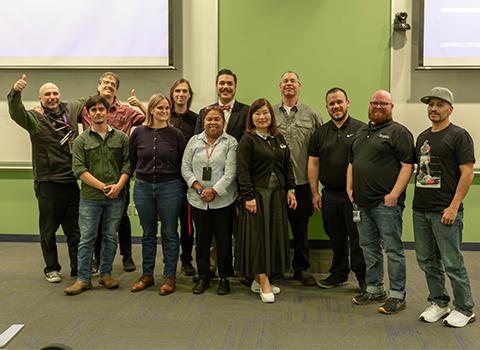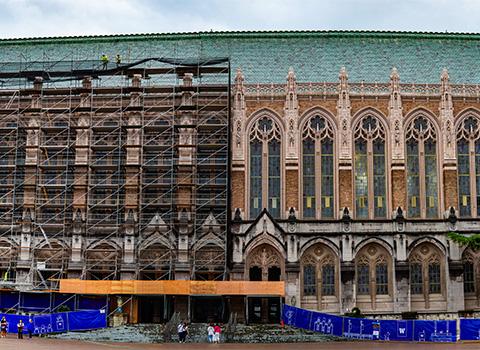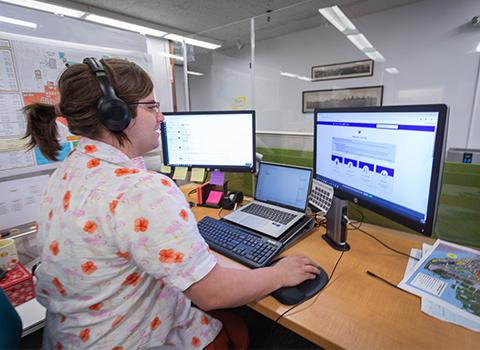Catching a leak before it’s a flood
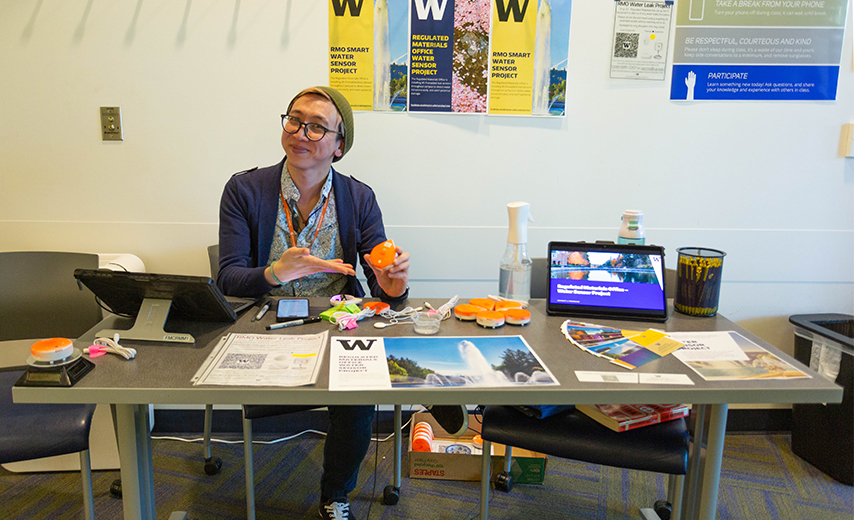
David Lee, an RMO industrial hygienist, shows off one of UWF's new water sensors at the UWF Safety Open House on April 30. The booth was part of RMO's efforts to educate UWF staff. Misty Shock Rule/University of Washington
Dozens of leaks flooded UW buildings over a three-day weekend last year, leading to over $500,000 in damage. Now, thanks to new water sensors, UW Facilities staff can get to some leaks almost as soon as they start.
Freezing temperatures led to flooding havoc in January 2024: Water ran down walls and disintegrated ceiling tiles, destroying offices, supplies and equipment. It cost UW Facilities (UWF) over $500,000 to fix the damage caused by the floods.
The new water sensors detect leaks when they first happen, before they can cause damage.
"If we had these sensors [that weekend], we would’ve responded to the floods much faster,” said UWF’s Saeid Rastegar. “We wouldn't have had to spend this much time and money and wouldn’t have had the inconvenience for the client."
Rastegar is the director of UWF’s Regulated Materials Office (RMO), a team of industrial hygienists and support staff that provides services related to leaks and damaged building materials, including mold, asbestos, biological contaminants and more.
His team identified which brand of sensors to use and started installing them last July. They placed them in upper-level mechanical rooms, which house the equipment most likely to leak and in position to cause damage to lower floors.
To date, the team has installed 151 sensors in 72 buildings. Their goal is to install 200.
The water sensors are the size of a hand and include an extension cable. Both the sensor and the extension cable detect moisture, steam or a change in temperature, sending a notification to an app monitored by RMO industrial hygienists. One of them can then rush to the scene to find out what’s going on.
Recently the sensors alerted the team to a leak that would’ve caused significant damage if it hadn’t been caught. On April 29, the app indicated moisture was detected in Benson Hall, home to the Chemical Engineering department. Industrial hygienists went to the building and found a pool of water that was dripping down the walls into the floor below.
They were able to stop the leak and prevent further damage. An occupant of a lower floor was “so excited” RMO was there to catch the leak, said Rastegar. He said there was a machine on the floor that would have been very expensive to replace.
Installing the sensors is just the first step. Now RMO is working to educate staff at UWF and across campus.
RMO first showed the sensors to Facilities Operations Maintenance Specialists (FOMS), who respond to campus maintenance issues 24 hours a day, seven days a week. If the app indicates there’s a leak in the middle of the night, the RMO staff monitoring the app now contact FOMS and they investigate the situation.
RMO plans to next work with plumbers and pipefitters, who can help identify the best places to install the sensors, let RMO know if they go offline and more.
Rastegar is also meeting with UW Medical Center, Housing and Food Services, and Intercollegiate Athletics.
Getting the word out is an important part of helping the program reach its full potential, said Russell Browne, RMO's industrial hygienist manager.
"Sometimes when we call up to ask someone to go look at something, they don't know what we're talking about,” he said. “We're still working to get it so that people understand what's happening with the sensors so that it becomes a seamless part of campus."
For RMO, it’s all about preventing destruction from floods, whether it’s an isolated incident or more widespread, like what happened over the three-day weekend in January last year.
"Imagine, when everything is crumbling and falling down, no one knows where that came from,” said Rastegar. “It’s a pretty good deal for our Facilities team to know right away about the source of the problem. That's what these sensors do."
